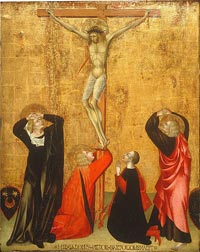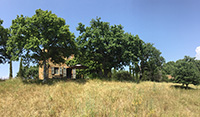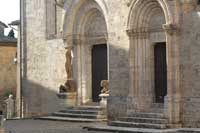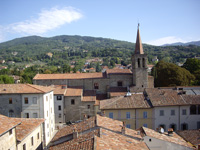 |
Giovanni di Paolo, Crucifixion, 1461, tempera and gold on panel, 29.8 x 62.7 cm, Utrecht, Rijksmuseum Het Catharijneconvent |
Giovanni di Paolo |
Giovanni di Paolo was an independent artist who managed to thrive in a Siena which was on the one hand conservative and on the other responsive to such inventive minds as Sassetta and the Osservanza Master. Like these artists, Giovanni di Paolo had remarkable narrative gifts as an artist as is clear from such masterpieces as The Life of John the Baptist (Art Institute of Chicago), The Expulsion of Adam and Eve from the Garden of Eden (Robert Lehman Collection, Metropolitan Museum, New York) and the Paradise (Metropolitan Museum, New York). His early training seems to have included contact with Lombard artists (his earliest patron was the Lombard Anna Castiglione a relative of Cardinal Castiglione Branda, patron of Vecchietta) and probably French artists too. He could, for example, have known the Limbourg brothers, the Franco-Flemish illuminators who were in Siena in 1413. Certainly the nervous, staccato quality of line that distinguishes his work from that of his Sienese contemporaries betrays an assimilation of Lombard and French Gothic forms. By the mid 1420s Giovanni di Paolo's career was flourishing and from that period come the Pecci and Branchini altarpieces (Pinacoteca Nazionale, Siena and Norton Simon Museum, San Marino) which both show the influence of Gentile da Fabriano who had painted a (now lost) altarpiece in 1425/6 for the Sienese Notaries Guild. |
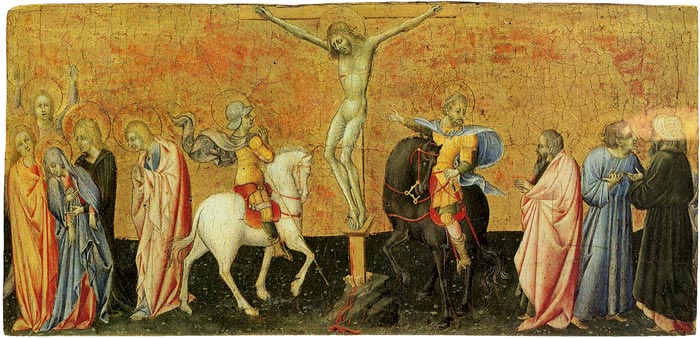 |
|||
Giovanni di Paolo, Crucifixion, about 1456-1461, tempera and gold on panel, 28.5 x 53.7 cm, private collection |
|||
| The city-state of Siena, a large Italian hill town some 70km south of Florence, had its golden age in the early trecentro under the artistic genius of Duccio (c.1260–1319) and Simone Martini (c.1285–1344). They developed a rich courtly style dependent on a dancing line rather than the naturalistic concerns of Florentine painters such as Giotto. Giovanni di Paolo’s Crucifixion pays homage to this legacy, to which he was bound by a continuous workshop tradition. The stylised scalloping of the figures’ cascading drapery is a hallmark of this regional inheritance. The artist seems to have been enormously popular in his own lifetime and over two hundred generally-accepted autograph works survive. The painting shows the Virgin Mary, Mary Madgalen, a donor and St John the Evangelist below the crucified Christ. Tempera and gold leaf have been applied to a ground of white gesso, onto a support of three poplar planks. Suspended from the cross, Christ’s limp, ashen-coloured body is uncompromising against the gilded background. Giovanni di Paolo has contrasted the silent dignity of the dead Saviour with the intense grief of the terrestrial mourners. The exquisitely painted, almost transparent veil of Christ’s loin-cloth is a dramatic counterpoint to the heavy drapery of the figures below, while His wax-like flesh accentuates the pinks and reds of the other faces. Key witnesses to the Crucifixion, the Virgin Mary and St John are conventionally colour-coded in blue and red respectively, although the blue of Mary’s robe now appears green. The Magdalen is shown with blond hair flowing over her scarlet garment, hands crossed and clutching the cross. Her fingers are shown clutching the edge of the suppedaneum (the block to which Christ’s feet are nailed), while his blood is shown streaming down the cross. |
|||
Inscribed l.l. to l.r., tempera,
|
|||
| The function of the painting is given in its Latin inscription ‘hic iacobvs pictor bartolomei iacet’which translates as ‘Here lies the painter Jacopo di Bartolomeo’. Very little is known of Jacopo – here seen kneeling with his red hat cast over one shoulder – except that he was an artisan-painter and stonemason. His name is first mentioned in 1403, and the final reference to him is dated 1444, but no works can be attributed to him with certainty. From the form of the inscription, as Pope-Hennessy points out, it can be inferred that the purpose of the painting was commemorative and that it surmounted a grave or a sepulchral slab. His hands folded in prayer, Jacopo di Bartolomeo looks up, meditating on the Crucifixion. However the artist, unlike the other figures, is not shown as a participant in the scene; his individualised features bear no trace of emotion, while his fifteenth-century dress sets him apart from the Marys’ and St John’s biblical robes. Above the Virgin and St John, and on either side of Christ, two flying angels are incised. As Grishin reminds us, by the use of the outline only, Giovanni di Paolo suggests ‘… the invisible, metaphysical nature of the angelic beings and compositionally retains a carefully balanced triangular structure.’1
Giovanni di Paolo used the same cartoon – or variants – at a number of different points in his career and, apart from the portrait of the donor, all the figures have their close resemblances elsewhere.2 The closest parallel for the figure of the dead Christ is found on a smaller scale within the central panel of a predella, The Crucifixion with Sts Jerome and Bernardino 1450–55, added to Andrea Vanni’s polyptych for the church of Santo Stefano alla Lizza in Siena. The distraught Virgin is also based on a cartoon that the painter used on two other occasions in a reduced form: she appears in the Santo Stefano predella, and again, with head upturned and veil thrust back, in The Crucifixion c.1465 (Gemäldegalerie, Berlin). St John the Evangelist recalls similar figures in a predella panel of the Fondi Altarpiece c.1436 and in the Crucifixion 1440 painted for the Franciscan convent of the Osservanza outside Siena(both Pinacoteca Nazionale, Siena). The kneeling Magdalen recurs, almost on the same scale, in The Crucifixion1430s (Staatliches Lindenau-Museum, Altenburg) and in the Osservanza Crucifixion,as do the heavy wedges with which the cross is fixed into the ground.
|
|||
 |
|||
|
Eremo di San Leonardo al Lago, fresco door Giovanni di Paolo
|
|||
Dóra Sallay, "Giovanni di Paolo: un Crocifisso in meno, una Crocefissione in più”, Nuovi Studi, XI, 12, 2006, pp. 25-3| www.academia.edu/1462039
exhibition website: www.rinascimentosiena.it http://www.rinascimento.terresiena.it/renaissance/arti_siena_primo_rinascimento_mostra.en.html |
|||
|
||||
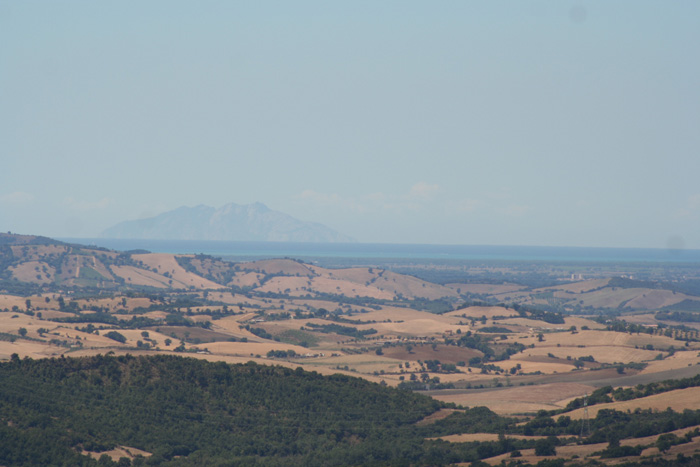 |
||||
Podere Santa Pia, an ancient country estate, faces the gentle hills of Maremma Region, a place always admired for its views and its surrounding landscape. SabtaPia is the ideal location for those who wish to enjoy total privacy . |
||||
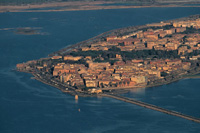 |
||||
Podere Santa Pia |
Podere Santa Pia, garden |
Orbetello | ||
 |
 |
|||
| The towers of San Gimignano | Montalcino |
Siena, Duomo |
||
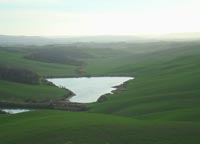 |
||||
Asciano, between Montalcino and Siena |
San Quirico d'Orcia |
Sansepolcro |
||
Tuscany is filled with world-renowned wine regions, and although Santa Pia is off the beaten track it is the ideal choice for those seeking a peaceful, uncontaminated environment, yet still within easy reach of the the famous Tuscan wines. The central location of the holiday home allows you to visit the nearby beautiful villages Montalcino, Sant'Antimo, Pienza, S. Quirico d'Orcia and Montepulciano.
|
||||
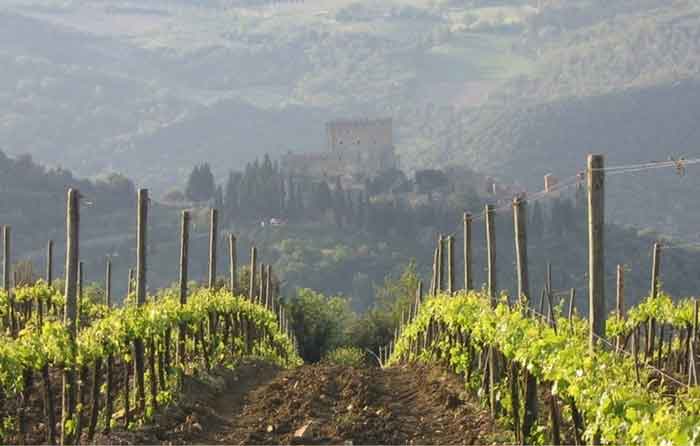 |
||||

